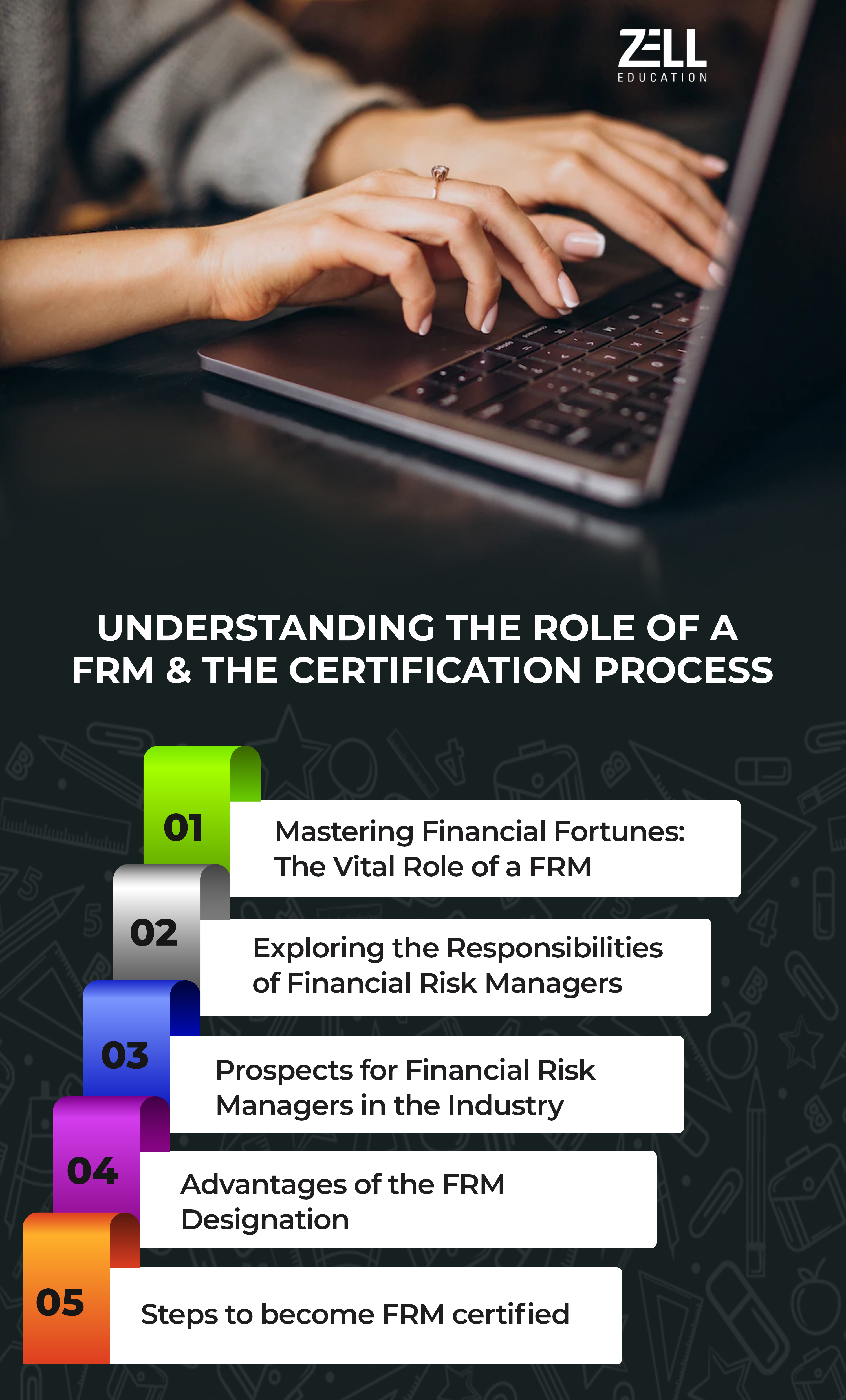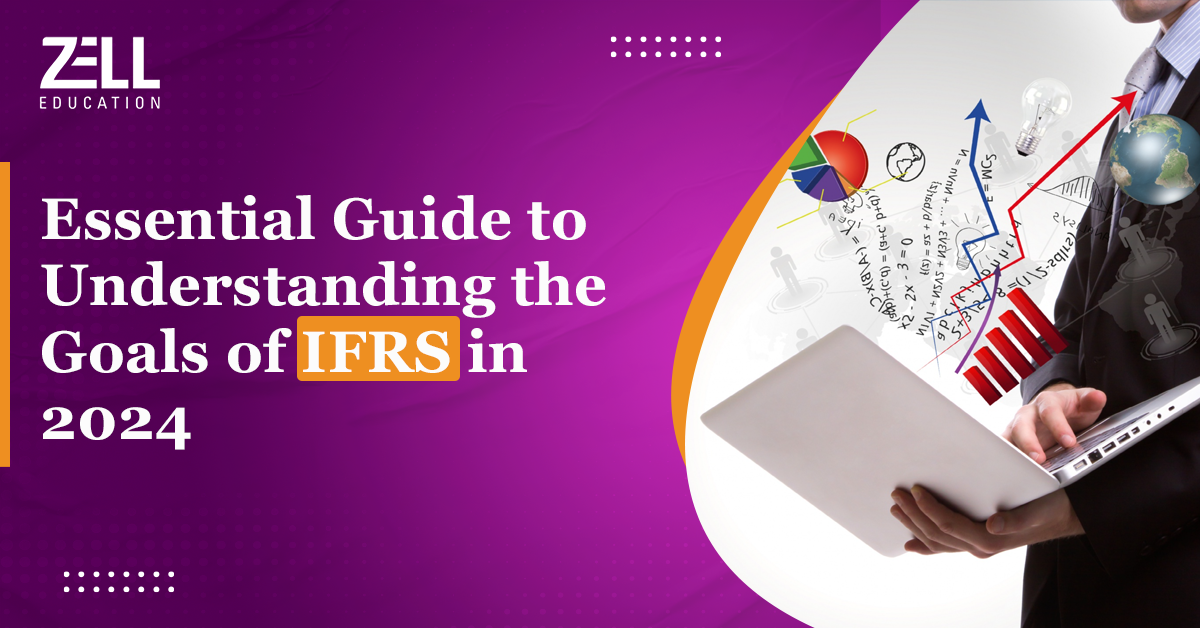Understanding the Role of FRM and Certification Process
In today’s fast-evolving world of finance, keeping the assets safe and passing through the risks are supreme decisions for organizations of all sizes. Various fluctuations are seen in the market, and these events disrupt its stability. Hence, the responsibility of a Financial Risk Manager acts as a cornerstone of resilience.
The responsibility and role of a Financial Risk Manager act as a primary tool for maximizing the stability and economy of the business. Managing market volatility and making sure regulations are followed, the Financial Risk Manager plays one of the most important roles in protecting financial resources and guiding business fortunes toward long-term goals.
Mastering Financial Fortunes: The Vital Role of a Financial Risk Manager (FRM)
From navigating the choppy waters of market volatility to ensuring adherence to intricate regulations, FRMs play an indispensable role in safeguarding financial well-being and guiding organizations toward a sustainable future. Remember the pivotal role they played in minimizing losses during the 2008 financial crisis? Their expertise goes far beyond reactive measures, actively shaping strategies that propel businesses toward long-term prosperity. Let’s walk on the journey to reveal the responsibilities, promising rules, and unique advantages associated with this esteemed designation while also charting the path toward becoming a sought-after FRM.
Exploring the Responsibilities of Financial Risk Managers:
From facing various risks to developing various risk management strategies, FRMs are tasked with an abundance of duties. Their domain mainly consists of market risks, operational risks, credit risks, and liquidity risks. Hence, it requires a complete knowledge of financial instruments and regulatory frameworks. Here is a breakdown of the various responsibilities that a financial risk manager handles:
Identification and Evaluation of Risks:
The main role of FRM is to provide defense against potential financial threats. They analyze and identify a wide range of risks, such as credit risk, market risk, operational risk, and liquidity risk. Credit risk is the risk of borrowers defaulting on loans. Market risk is a risk caused by an increase or decrease in the asset value, interest rates, or exchange rates. Liquidity risk is a risk that is difficult to match with the rules and regulations due to a lack of readily available cash.
Risk Reduction and Handling:
First of all, these financial managers identify the risk. They do not sit back and watch. Meanwhile, they actively develop and implement strategies to decrease the impact of risk on the business.
- Developing contingency plan: Risk managers have created strategies for worst-case scenarios and have outlined steps to reduce the damage.
- Hedging: Financial managers use various financial instruments to balance possible losses resulting from unfavorable market fluctuations.
- Diversification: Risk Managers spread instruments across various instruments and asset classes to reduce the exposure to only one risk element.
- Outlining the upper limit of risk: Financial managers establish limits on acceptable risk levels and act appropriately when those boundaries are crossed.
Adherence to Regulations:
The financial world is governed by a complex web of regulations. The role of FRM is crucial in ensuring their organizations comply with these regulations and mitigating the risk of legal repercussions and fines. Managers should stay updated on charging regulations. They should conduct regular compliance reviews and try to implement appropriate financial risk management frameworks. There should be a reporting compliance status to relevant authorities.
Reporting and Communication:
Clear and clarifying communication is necessary for an FRM’s success. They need to clearly communicate risk assessments, mitigation strategies, and compliance efforts to various stakeholders, including regulatory authorities, board of directors, senior management, and risk management committees.
Continuous Learning and development:
The financial landscape is constantly evolving, and new risks emerge all the time. To stay ahead of the curve, FRMs must be committed to continuous learning and development. This involves:
- Keeping up-to-date with industry trends and best practices.
- Attending training programs and workshops.
- Participating in professional organizations.
- Staying abreast of new regulations and technological advancements.
Prospects for Financial Risk Managers in the Industry:
The financial industry primarily works on the basis of risk and strategies. It mainly depends on the calculated risk and reducing the downside potential and reducing the downside potential by ensuring the stability is more precious. Hence, FRM emerges as a key figure in these situations. There are various factors that lead to the rise of skilled and knowledgeable FRMS:
Heightened Regulatory Scrutiny is Stringent regulations following financial crises demand robust risk management practices, propelling the need for qualified FRMs. Another reason is the Growing Financial Complexity. Increasingly complex financial instruments and interconnected markets magnify risk, necessitating expert mitigation strategies. Another option is Tech-Driven Transformation. Big data and AI are revolutionizing risk management, requiring FRMs to be adept at leveraging these technologies. And at last, Global Expansion. International financial activities necessitate cross-border risk management expertise, boosting FRM demand globally.
Financial Risk Managers get expensive salaries, and this is one of the most attractive career progressions. According to reports, experienced FRMs get a commanding salary in six figures, exceeding their non-certified counterparts. This trend goes on as demand for skilled professionals outpaces supply.
Advantages of the FRM Designation:
In today’s ever-changing world, the finance industry is wrapped up with various kinds of uncertainties. Hence, the role of FRM stands as a light of expertise and opportunities:
Increased Recognition and Credibility:
The FRM acts as a rigorous commitment to excellence in risk management. It demonstrates your mastery of complex financial concepts, quantitative analysis, and industry best practices, earning you the trust and respect of employers and peers alike.
Enhancing Career Opportunities:
The FRM opens a door to a diverse and exciting career path. When you invest your money in traditional finance giants like banks and insurance companies and explore the world of fintech startups, the FRM position is a highly owned asset.
Competitive Pay and Advancement in Career:
The demand for skilled FRMs outpaces the supply, translating to exceptional earning potential. Studies reveal that FRMs with the designation command significantly higher salaries compared to their non-certified counterparts.
Mobility and Global Relevance:
The FRM designation transcends regional boundaries, holding international recognition and value. This empowers you to explore career opportunities globally, expanding your professional horizons and fostering a truly international career path. As financial markets become increasingly interconnected, your global outlook and risk management expertise will be highly sought after.
Lifelong Learning and Knowledge Expansion:
The FRM designation isn’t just an end goal; it’s a commitment to continuous learning and professional development. By staying abreast of evolving regulations, emerging technologies, and industry trends, you ensure your knowledge remains relevant and valuable. This ongoing learning journey fosters intellectual growth, keeps you at the forefront of your field, and opens doors to even more specialized opportunities.
Networking and Community Access:
As an FRM, you gain access to a vast and dynamic network of fellow professionals through GARP, the Global Association of Risk Professionals. This vibrant community provides opportunities for knowledge sharing, mentorship, and career support.
Steps to Become FRM Certified:
The FRM position represents a mark of distinction in the world of finance, signifying expertise in reducing risk and safeguarding financial stability.
- Eligibility:
Should have completed a bachelor’s degree in any field (finance, accounting, mathematics, or any other field). One should have at least two years of relevant work experience in financial risk management.
- Register for the FRM exams:
The FRM program consists of two levels, each with a separate exam. Exams are offered twice a year, mostly in the month of May and November.
- Prepare for the exam:
Make use of proper study materials, including textbooks, practice exams, and other online resources. Consider supplementing with third-party materials and online courses. Keep dedicated, focused study time. Make sure that you regularly take practice tests to assess your understanding.
- Take Exam:
Exams are computer-based and are held at specified exam centers worldwide. Each part consists of 100 multiple-choice questions with a four-hour time limit.
- Get the Position:
Pass both the FRM exams successfully and fulfill the work experience requirement. Submit your work experience as a verification to GARP. Maintain your certification through a continuous professional development activity.
Conclusion:
An FRM is one of the rewarding career paths that offers various challenges, professional growth, and satisfaction for safeguarding financial stability. If you have any other analytical power, a risk-taking mindset, and a passion for finance, then you should definitely go for this service.
FAQ:
How many years does it take to get FRM?
There is no proper time period. But it mainly takes 1-2 years to prepare for and pass the exams. Also, it requires two years of work experience.
Can I clear FRM in 3 months?
With proper dedication and strategies towards the extensive exam syllabus, one can easily clear this exam within three months.
Is FRM a professional course?
Yes, the FRM is a globally recognized professional designation demonstrating expertise in financial risk management.
What is the main goal of the financial manager?
The main goal of a financial manager is to maximize the financial well-being of an organization by making sound investment and risk management decisions.











test